By its very nature, scientific research is a process that often ventures into the unknown. While the pursuit of knowledge is inherently rewarding, the path to discovery is often fraught with challenges. Funding landscapes shift, technological advancements introduce both opportunities and complexities, and the need for rigorous data management grows ever more critical to help organizations make informed decisions, track compliance, and plan for the future.
In this dynamic environment, research resilience is not merely a desirable trait but an essential prerequisite for sustained scientific advancement and impact. It empowers research projects and institutions to withstand unforeseen obstacles, adapt to evolving circumstances, and consistently deliver meaningful results.
This blog post will delve into three fundamental pillars that underpin research resilience: diversified funding, automated workflows, and accurate reporting, exploring their significance and the reliable stability they create when implemented effectively.
Pillar 1: Diversified Funding

The lifeblood of any research endeavor is financial support. However, reliance on a limited number of funding sources exposes research projects to significant vulnerability. Economic downturns, shifts in governmental priorities, or changes in the strategic focus of a specific funding agency can abruptly jeopardize even the most promising research.
Cultivating diversified funding is therefore essential for creating a more resilient research organization, providing a buffer against financial instability and ensuring the continuity of vital work.
Why diversification matters:
- Mitigates risk: Dependence on a more limited selection of funding sources means that the loss of that funding can bring research to a standstill. A diversified funding background reduces this risk, ensuring that alternative avenues of support are available.
- Enhances sustainability: Multiple funding streams can provide a more stable and predictable financial foundation, allowing for long-term planning and the pursuit of ambitious research goals.
- Provides competitive advantages: Securing funding from diverse sources ensures more stability for ongoing research projects and can create a competitive advantage in an environment where researchers are still pressured to publish discoveries as quickly as possible despite nationwide funding challenges.
Strategies for diversifying funding:
- Explore a wide range of granting agencies: Beyond traditional government funding, investigate private foundations, non-profit organizations, and international funding bodies whose missions align with your research.
- Forge partnerships with industry leaders: Collaborative research agreements with industry partners can provide valuable financial support, access to resources, and opportunities for translational research.
- Cultivate philanthropic relationships: Engaging with individual donors and philanthropic organizations can unlock significant funding opportunities, particularly for impactful and publicly beneficial research.
- Consider internal funding mechanisms: Many institutions offer internal grant programs to support pilot projects, early-career researchers, and interdisciplinary initiatives. Leverage these resources strategically.
- Encourage research commercialization: Technology Transfer can help research organizations turn their discoveries into consumer-ready innovations. While the results may not create direct funding, effective commercialization provides organizations with more resources to internally support important research.
Pillar 2: Automated Workflows

In today’s data-rich and technologically advanced research landscape, manual processes can introduce inefficiencies, increase the risk of errors, and consume valuable researcher time that could be better spent on core scientific activities. Effective automated workflows are crucial for optimizing research operations, enhancing data integrity, and fostering resilience by freeing up resources and reducing reliance on manual, repetitive tasks.
Benefits of workflow automation:
- Increased efficiency: Automation streamlines repetitive tasks, such as data entry, submission reviews, and basic analysis, significantly accelerating the research process.
- Reduced errors: Automating processes minimizes the potential for human error, leading to more accurate and reliable data and reducing the frequency of revisions and resubmissions.
- Time Savings: By automating time-consuming tasks, researchers can dedicate more time to critical research and workplace responsibilities, including classroom support in higher education institutions and patient care in healthcare organizations.
Areas for workflow automation in research:
- Data organization and analysis: Utilize software and tools for automated data management to build more robust analysis and reports, helping your organization’s leadership make better data-driven decisions.
- Compliance management: Deploy tools that automate forms and workflows for review board and other compliance submissions, increasing transparency and helping to ensure information is entered correctly the first time for easy reviews, approvals, and revisions.
- Project management: Implement project management software to automate task assignments, track progress, manage deadlines, and facilitate communication within research teams.
- Administrative tasks: Automate tasks such as scheduling meetings, managing lab inventory, and monitoring purchasing to keep operations running smoothly without time-consuming manual oversight.
Pillar 3: Accurate Tracking and Reporting
![]()
Comprehensive and accurate tracking and reporting are essential for effective research management, accountability, and the ability to adapt to unforeseen challenges. By meticulously documenting progress, resources, and outcomes, researchers and institutions can gain valuable insights into project performance, identify potential roadblocks, and make informed decisions to ensure research resilience.
The importance of robust tracking and reporting:
- Resource management: Accurate tracking of financial expenditures, personnel time, and equipment usage enables efficient resource allocation and helps prevent overspending or underutilization.
- Accountability and transparency: Detailed records and transparent reporting demonstrate accountability to funding agencies, stakeholders, and the public.
- Data-driven decision-making: Comprehensive data provides the foundation for making informed decisions about project direction, resource allocation, and future research strategies.
Key elements of effective tracking and reporting:
- Organized data repositories: Establish secure and well-organized systems for storing all research-related data, including raw data, analysis scripts, protocols, and reports.
- Regular progress reports: Implement a system for generating regular progress reports that summarize key findings, milestones achieved, challenges encountered, and future plans.
- Key Performance Indicators (KPIs): Define relevant metrics to track the success and impact of research projects, such as publication rates, citation counts, patent filings, and translation to practice.
- Comprehensive financial tracking: Maintain detailed records of all research expenditures, ensuring adherence to budget guidelines and providing a clear audit trail.
- Effective communication strategies: Establish clear channels for communicating progress, challenges, and findings to all relevant stakeholders.
Final Takeaways: Building a Resilient Research Ecosystem
Research resilience is not a static state but an ongoing process that requires proactive planning, strategic implementation, and a commitment to continuous improvement. By embracing the three pillars of diversified funding, automated workflows, and accurate tracking and reporting, researchers and their organizations can build a robust framework that enables them to navigate the inherent uncertainties of the scientific endeavor, maximize their impact, and contribute meaningfully to the advancement of knowledge. Investing in these pillars is not merely an operational necessity; it is a strategic imperative for ensuring the long-term success, growth, and sustainability of the scientific enterprise.
Learn more about our solutions for Award Management, Compliance Management, Vivarium Management, and Technology Transfer, or connect with a Cayuse representative to see how Cayuse can improve research resilience at your organization.


